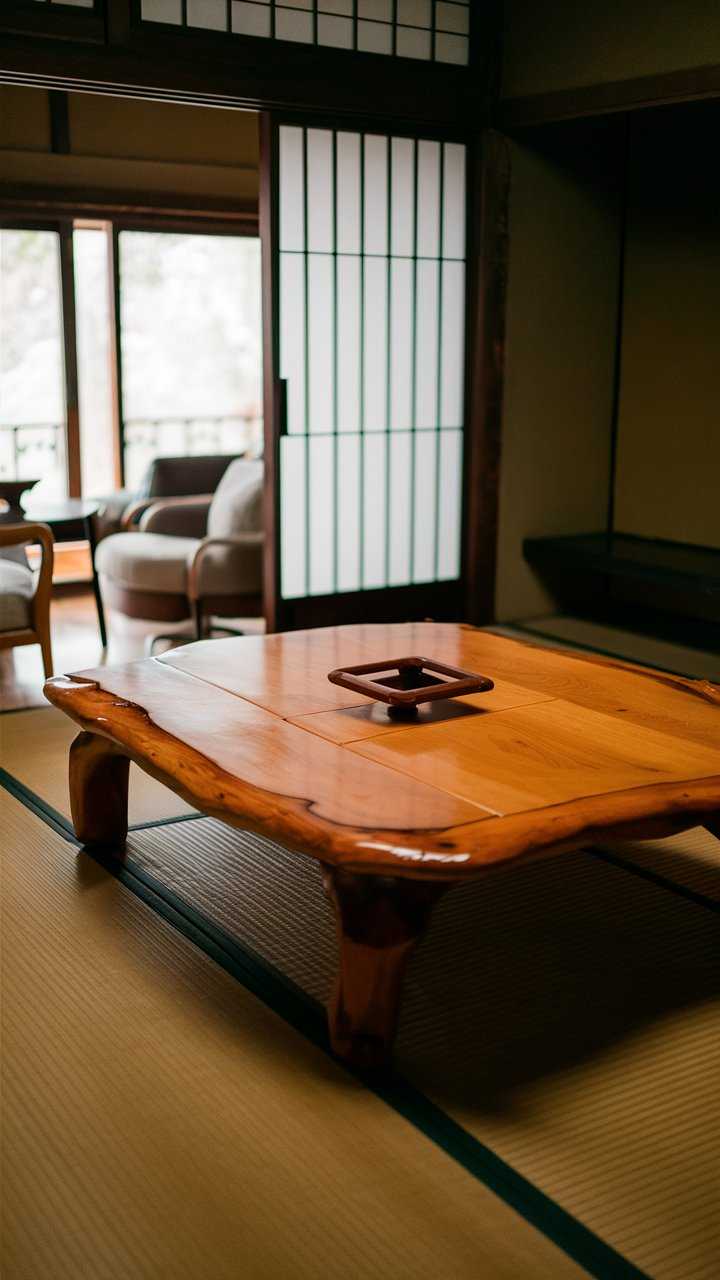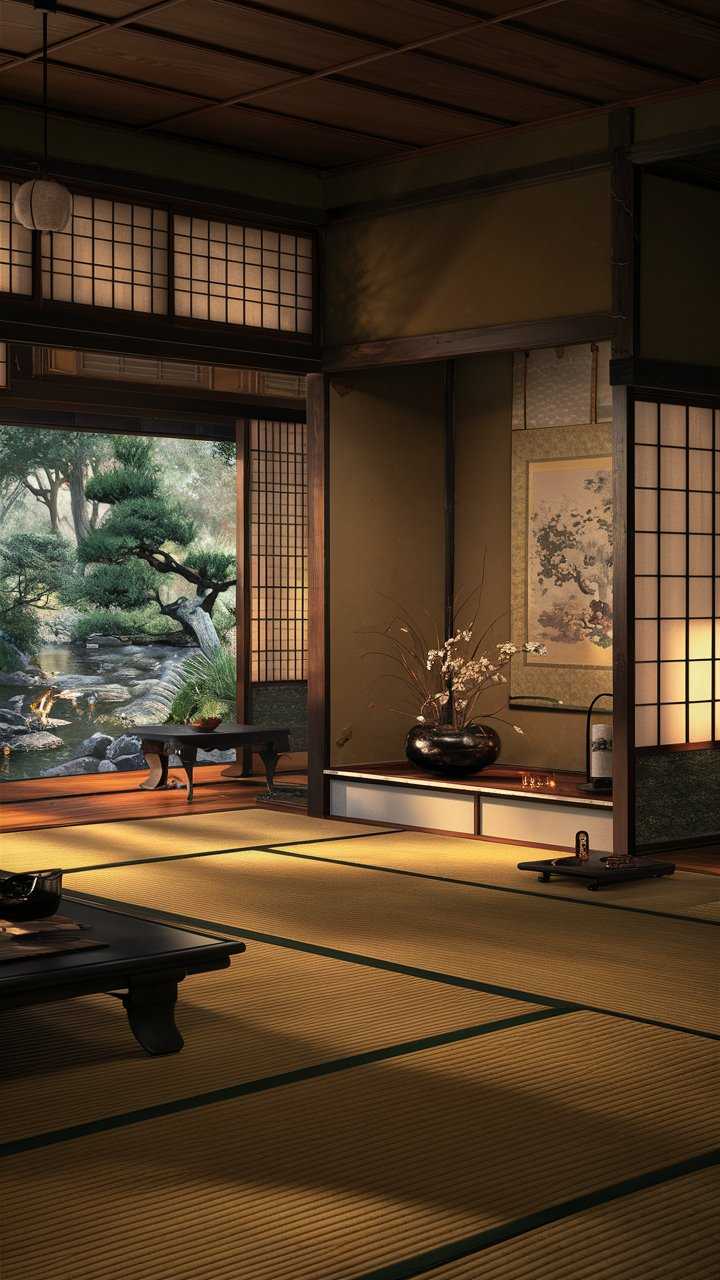Discover the Charm of Japanese Living Room Tables
A japanese living room table combines simplicity, elegance, and functionality. It’s more than just furniture; it’s a key part of creating a peaceful, minimalistic space. This article explores how these tables bring calm and beauty to your home.
By adding a japanese living room table, you make your space both beautiful and practical. This is key for today’s lifestyle.
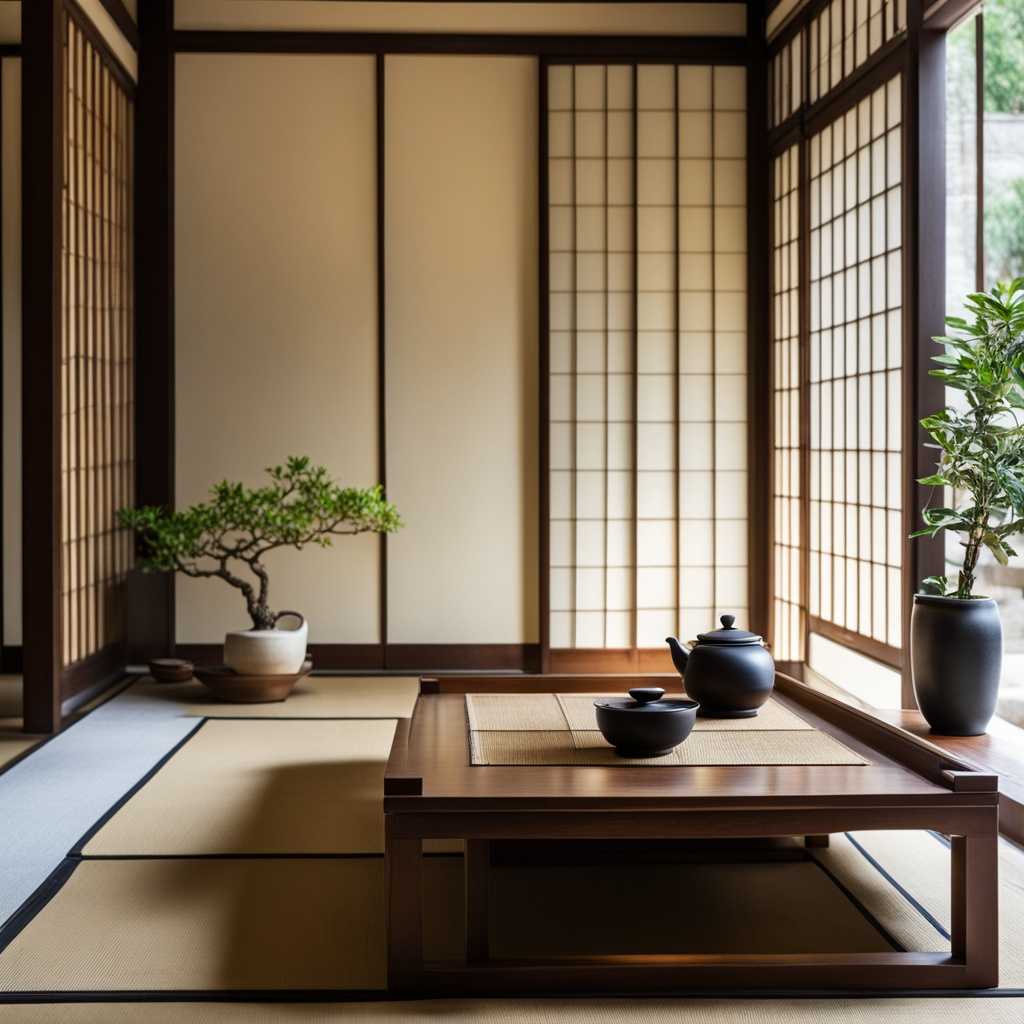
Key Takeaways
- Japanese living room tables promote minimalist aesthetics.
- These tables blend functionality with elegance.
- Incorporating a japanese living room table enhances tranquility.
- Japanese design roots are evident in contemporary furniture choices.
- They play a key role in creating a calming home atmosphere.
The Essence of Japanese Living Room Tables
Japanese living room tables are more than just furniture. They bring the essence of minimalist Japanese decor into your home. These tables are made from natural materials. They mix function with beauty, making your space calm and simple.
Adding one of these tables to your living area supports a zen living furniture theme. Their clean designs follow Zen philosophy, aiming for balance between you and your space. They’re not just useful; they also make your room look better.
For a peaceful vibe, pair your table with floral wallpaper that feels like nature. A great option is the watercolor floral wallpaper. It adds color and softness, matching well with a Japanese living room table.
Choosing a minimalist look with Japanese living room tables creates a calm, balanced space. Their beauty and cultural importance make them key for modern homes wanting peace.
Traditional Japanese Chabudai: A Cultural Icon
The traditional japanese chabudai is a key part of Japanese culture. It combines beauty with usefulness in a unique way. This low, round table is used for dining, tea ceremonies, and family time. Its design shows the beauty of Japanese style.
Understanding the Design and Functionality
The chabudai’s design is simple yet elegant. It stands between 15 to 30 cm tall and is made from wood. This shows the importance of using natural materials in home decor. The table’s height lets people sit on the floor, bringing everyone closer during meals and gatherings.
How Chabudai Reflects Japanese Aesthetics
This piece follows the wabi-sabi philosophy, finding beauty in imperfection. Its clean lines and natural look are typical of Japanese style. The chabudai helps create a clean space, letting the beauty of nature stand out. It’s more than just a table; it’s a symbol of a life that values peace, calm, and simplicity.
Creating a Zen Living Space
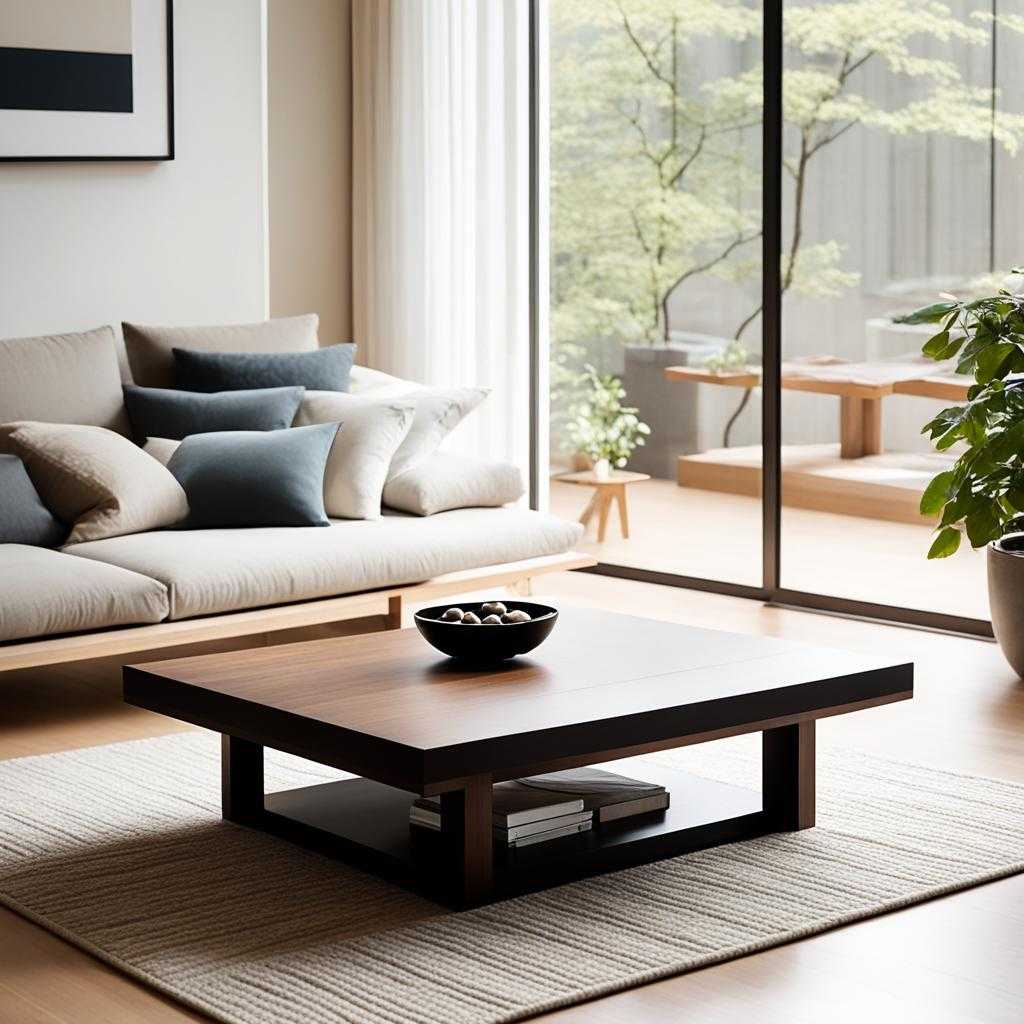
Creating a zen living space means picking out the right furniture and decor. A low Japanese coffee table is key, bringing calm and comfort. It makes the space welcoming for relaxing and being mindful.
Incorporating Low Japanese Coffee Tables for Tranquility
Adding a low Japanese coffee table makes your living area feel more laid-back and connected to the ground. It’s perfect for enjoying tea, eating together, or just thinking quietly. Its simple design helps keep the space tidy, which is key for a zen feel.
Benefits of Minimalist Japanese Decor
Minimalist Japanese decor goes hand in hand with the calm vibe of low Japanese coffee tables. It focuses on clean lines and natural materials, removing anything not needed. This style highlights the quality of your furniture, bringing peace and calm into your home.
Exploring Tatami Room Tables
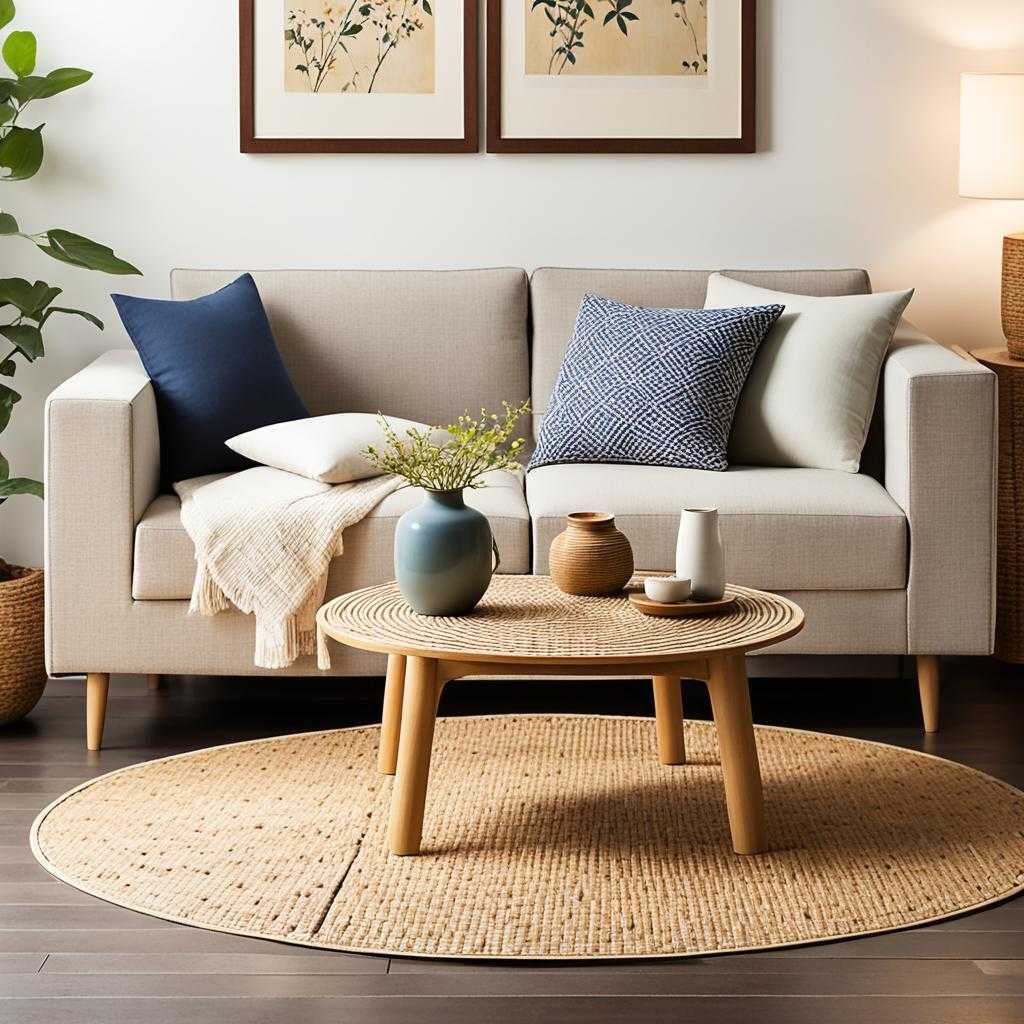
Tatami room tables are key to making traditional Japanese interiors beautiful and functional. They go well with tatami mats, creating a look that captures Japanese design’s essence. Knowing how tatami mats and furniture work together helps us see the deep culture and beauty of these spaces.
The Role of Tatami Mats in Japanese Interiors
Tatami mats are more than just flooring in Japanese homes. They add warmth and texture with their natural fibers and colors. These mats make the floor soft and inviting, perfect for relaxing or having casual gatherings. A tatami room table on top of these mats fits right into the peaceful feel of traditional Japanese settings.
Different Style Options for Tatami Room Tables
There are many styles of tatami room tables to choose from, depending on what you like and where it will go. Here are some popular ones:
- Low Traditional Tables: These sit right on the tatami mats, connecting you to the ground.
- Elevated Tables: Great for those who want a bit of height, these tables offer comfort while keeping the traditional look.
- Modern Designs: These tables mix minimalism with traditional touches, appealing to many people.
Picking the right tatami room table can really change a room, showing how furniture and tatami mats work together beautifully.
| Table Style | Height | Material | Best Suited For |
|---|---|---|---|
| Low Traditional Table | 15 inches | Wood | Casual dining, tea ceremonies |
| Elevated Table | 24 inches | Wood, Metal | Dining, multifunctional use |
| Modern Design | 18 inches | Mixed Materials | Contemporary settings, stylish decor |
Incorporating Wabi-Sabi Inspired Elements
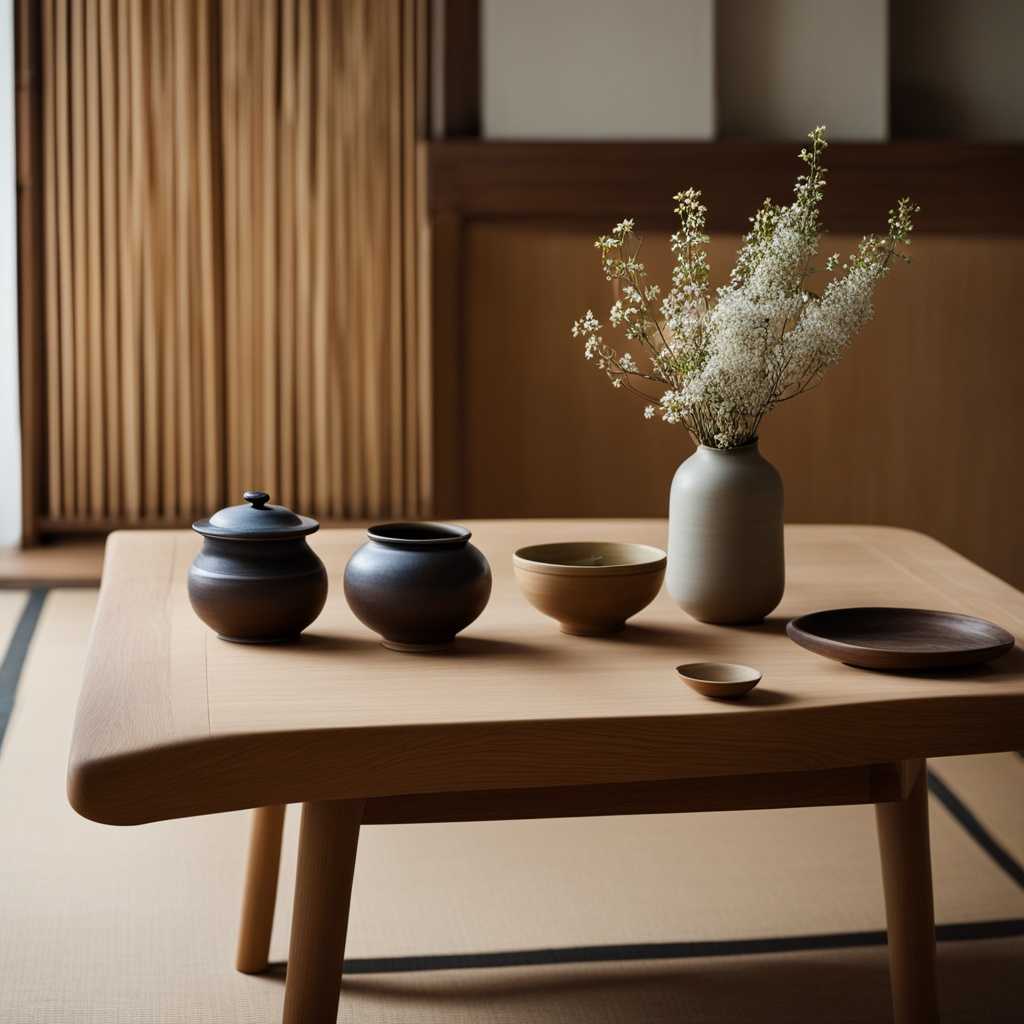
The heart of a wabi-sabi inspired table is its true nature, simple beauty, and love for beauty in imperfection. This Japanese way of thinking values things that show natural signs of aging and uniqueness. It makes each piece feel special and meaningful. Using handmade or reclaimed materials adds a warm, organic feel to your space. This connects you to nature and tradition.
Think about the different materials and designs that show this philosophy:
- Reclaimed wood: Each piece tells its own story, adding character and depth.
- Handmade pottery: Imperfect yet beautiful, these pieces show the maker’s skill and history.
- Natural textures: Adding textiles or accessories with organic patterns boosts the wabi-sabi look.
Adding a wabi-sabi inspired table turns a regular living area into a peaceful retreat. Everyone can see and talk about the uniqueness of each item. It leads to discussions on craftsmanship, being eco-friendly, and the beauty of time passing.
Benefits of Low Japanese Coffee Tables
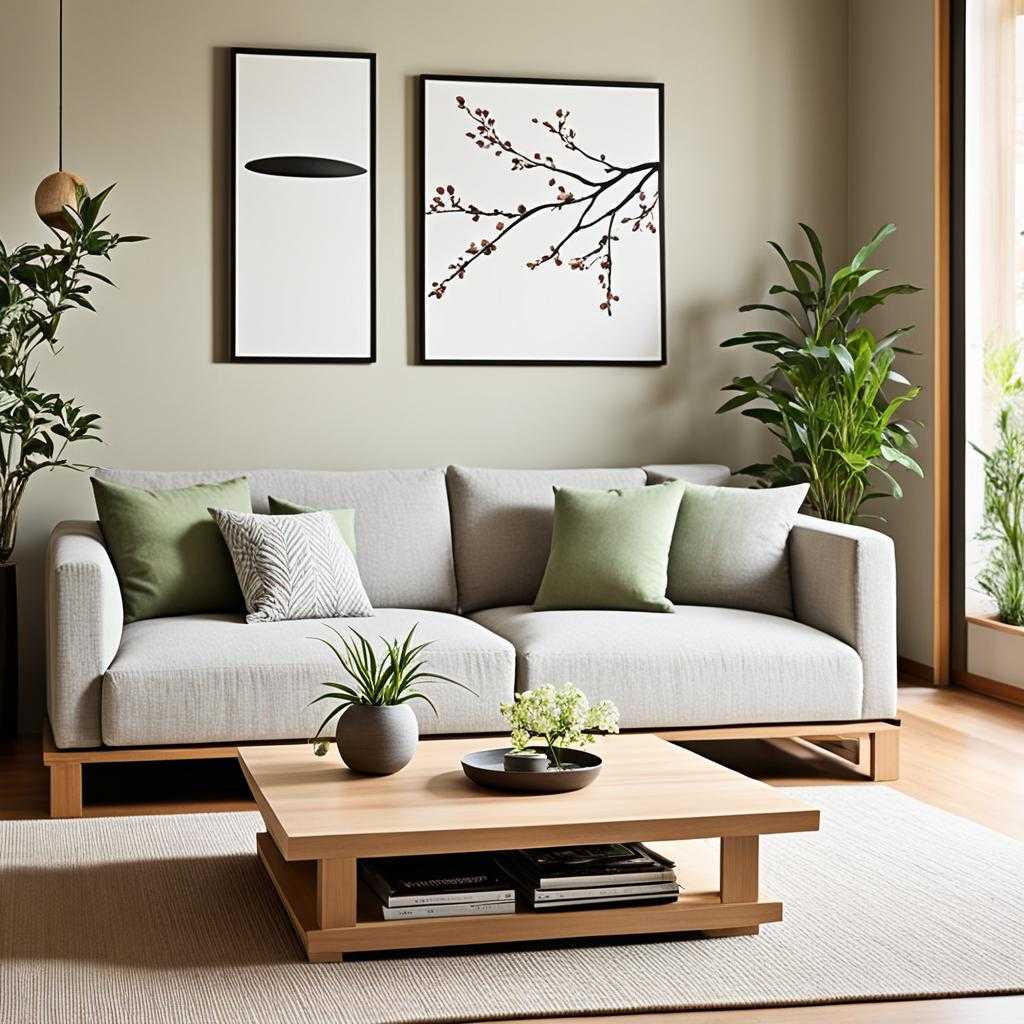
Low Japanese coffee tables are a great addition to modern homes. They mix style with practicality. Their low height makes social gatherings more comfortable.
Everyone can sit closer together, which helps friends and family connect better. This makes conversations more natural and enjoyable.
These tables are also very versatile. They fit well in many design styles, from traditional Japanese to modern minimalist. This lets homeowners keep their living areas looking consistent.
Low Japanese coffee tables make any room feel open and balanced. They’re perfect for relaxing with tea or having a meal with loved ones. These tables add both beauty and function to daily life.
Asian-Inspired Interior Design: A Broader Perspective
Asian-inspired interior design brings together traditional and modern styles. It offers a unique way to decorate that shows off personal taste and the beauty of different cultures. Modern Japanese design is a big part of this, focusing on simplicity and efficiency in living spaces.
Combining Modern and Traditional Aesthetics
Fusion decor is great at mixing modern and traditional looks. By blending modern Japanese design with classic elements, homes become spaces that celebrate new ideas and cultural roots. Japandi is a style that combines Scandinavian and Japanese design. It creates peaceful spaces that are both functional and warm.
- Incorporation of natural materials such as wood and stone enhances the organic feel.
- Utilizing neutral color palettes fosters a calming atmosphere.
- Emphasis on open spaces and natural light promotes a sense of tranquility.
Asian-inspired interior design lets people show off their style while respecting old traditions. This approach shows how design can evolve and still honor the past. It proves that modern living and tradition can live together beautifully.
Japanese Living Room Table: A Statement Piece
A japanese living room table is more than just furniture. It’s a centerpiece that makes a room look better. These tables come in styles from simple to complex, catching the eye and making a bold statement in home decor.
They are made from materials like rich hardwood or bamboo. Each table shows off Japan’s culture and is also useful. Many have colors that match well with different room styles. Adding a japanese living room table can make any room look better, whether it’s traditional or modern.
Think about how a table like this can bring people together. With things like fresh flowers or bowls on it, the table becomes the room’s main attraction. It changes how the room looks and feels, making it more welcoming.
Ryokan-Style Furnishings in Home Decor
Adding ryokan-style furnishings to your home brings a unique touch. It reflects traditional Japanese culture. You’ll find low wooden tables, comfy futons, and natural materials. These pieces bring warmth and comfort to your space.
This style is all about simplicity and harmony. It focuses on space, light, and minimalism. This creates a peaceful environment in your home.
Using these elements makes your decor feel serene, like a Japanese inn. Minimalism lets each piece stand out, making your space inviting. Low tables are great for casual meals, and futons are perfect for relaxing.
Wood and rice paper add to the authentic look of traditional Japanese elements. They make sure each item fits well with the decor. Choosing calm colors and textures adds to the zen feel, making your home a peaceful retreat.
Conclusion
The japanese living room table is key to creating a peaceful space. It brings together calmness and simplicity. These tables are not just useful but also make a room look better, making it perfect for relaxing and being mindful.
When thinking about your living space, consider adding these special pieces. They blend modern style with traditional values. This creates a space that feels calm and peaceful.
Choosing a japanese living room table starts a journey to make your home a peaceful, Asian-inspired place. It adds elegance and supports a simple lifestyle.
FAQ
What defines a Japanese living room table?
How does the Chabudai differ from a standard coffee table?
What are the benefits of using low Japanese coffee tables?
How do tatami room tables fit into traditional Japanese interiors?
What is wabi-sabi, and how can it be incorporated into living room tables?
In what ways can Asian-inspired interior design enhance my home?
What materials are commonly used in Japanese living room tables?
Can Japanese living room tables serve as statement pieces?
What are ryokan-style furnishings, and how do they influence home decor?
Source Links
- https://vauntdesign.com/blogs/our-blog/japandi-living-rooms-10-things-you-need-to-get-the-look-right
- https://www.pinterest.com/pin/19-astounding-japanese-interior-designs-with-minimalist-charm–514465957417998009/
- https://musubikiln.com/collections/table-setting-150-the-charm-of-a-japanese-tea-room-at-your-table
